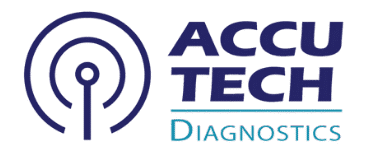Infectious Disease Diagnosis
"Infectious Disease Diagnosis" is the process of identifying the specific pathogenic microorganism (virus, bacterium, fungus, or parasite) responsible for causing an infection in a patient. This is a critical step in medicine, as an accurate diagnosis is essential for guiding appropriate treatment, preventing the spread of disease, and managing public health.
Key Steps and Methods in Infectious Disease Diagnosis
The diagnostic approach for infectious diseases is often multifaceted, combining clinical assessment with various laboratory techniques.
Clinical Assessment
- Patient History: Gathering information about symptoms (onset, duration, severity, specific characteristics), recent travel, exposures (sick contacts, animals, food/water), vaccination status, underlying medical conditions (e.g., immunocompromised state), and medication use.
- Physical Examination: Looking for signs of infection (e.g., fever, rash, swollen lymph nodes, localized redness/swelling, abnormal breath sounds).
- Differential Diagnosis: Based on clinical findings, the clinician develops a list of possible infectious (and non-infectious) causes.
Specimen Collection
- The appropriate specimen must be collected from the suspected site of infection. This is crucial for accurate diagnosis.
- Examples: Blood, urine, sputum, throat swab, nasal swab, wound swab, cerebrospinal fluid (CSF), stool, tissue biopsy, skin scraping.
- Proper Collection: Aseptic technique, correct container, adequate volume, and timely transport to the laboratory are paramount to prevent contamination and preserve pathogen viability.
Antimicrobial Susceptibility Testing (AST):
- Purpose: Once a bacterial or fungal pathogen is identified, AST determines which antimicrobial agents (antibiotics, antifungals) will be effective against it.
- Methods: Disk diffusion (Kirby-Bauer), broth microdilution, automated systems.
- Clinical Importance: Guides clinicians in selecting the most appropriate and effective treatment, crucial for combating antimicrobial resistance.
Laboratory Methods (The Core of Diagnosis)
- Direct Detection of the Pathogen (or its components):
- Microscopy:
- Purpose: Rapid visualization of microorganisms.
- Methods:
- Gram Stain (for bacteria): Differentiates bacteria into Gram-positive (purple) or Gram-negative (pink/red) based on cell wall, providing immediate clues for identification.
- Acid-Fast Stain (AFS): For mycobacteria (e.g., Mycobacterium tuberculosis).
- KOH Prep (Potassium Hydroxide): For fungal elements in skin/nail scrapings.
- India Ink Stain: For Cryptococcus neoformans in CSF.
- Direct Wet Mounts: For parasites (e.g., Trichomonas vaginalis).
- Blood Smear: For blood parasites (e.g., malaria parasites, trypanosomes).
- Clinical Importance: Rapid, initial information to guide empirical treatment.
- Culture:
- Purpose: Growing microorganisms in artificial media to allow for identification and susceptibility testing.
- Methods:
- Bacterial Culture: On various agar plates (blood agar, chocolate agar, MacConkey agar) and in broth media.
- Fungal Culture: On specialized fungal media.
- Viral Culture: Requires living cell lines (less common for routine diagnosis due to complexity and time).
- Clinical Importance: Gold standard for identifying many bacteria and fungi, and essential for Antimicrobial Susceptibility Testing (AST).
- Antigen Detection Tests:
- Purpose: Detect specific proteins (antigens) from the pathogen.
- Methods: Rapid diagnostic tests (RDTs) often using immunoassay principles.
- Examples: Rapid strep test (for Streptococcus pyogenes), Influenza A/B rapid test, Cryptococcal antigen test, Hepatitis B surface antigen (HBsAg), HIV p24 antigen.
- Clinical Importance: Fast results, useful for point-of-care testing or initial screening.
- Molecular Methods (Nucleic Acid Detection):
- Purpose: Detect the genetic material (DNA or RNA) of the pathogen. Highly sensitive and specific.
- Methods:
- Polymerase Chain Reaction (PCR) / Real-time PCR / RT-PCR: Amplifies tiny amounts of pathogen DNA/RNA.
- Next-Generation Sequencing (NGS): For broad pathogen identification, genotyping, and resistance detection.
- Examples: COVID-19 PCR, HIV viral load, Hepatitis C RNA, Chlamydia/Gonorrhea DNA, detection of antibiotic resistance genes.
- Clinical Importance: Rapid, sensitive, and specific diagnosis, especially for fastidious organisms or viruses that are difficult to culture. Used for viral load monitoring.
- Indirect Detection (Host Immune Response):
- Serology (Antibody Detection):
- Purpose: Detects antibodies produced by the patient’s immune system in response to an infection.
- Methods: ELISA, immunofluorescence, agglutination tests.
- Types of Antibodies:
- IgM: Usually indicates a recent or acute infection.
- IgG: Indicates past exposure or immunity (from prior infection or vaccination).
- Examples: HIV antibodies, Hepatitis A/B/C antibodies, Rubella antibodies, Lyme disease antibodies, Toxoplasma antibodies.
- Clinical Importance: Diagnosing infections where direct detection is difficult, determining immune status, or confirming past exposure.
- Serology (Antibody Detection):
- Microscopy:
Importance of Infectious Disease Diagnosis
The field of infectious disease diagnosis is constantly evolving with new technologies, particularly in molecular diagnostics, enabling faster and more accurate identification of pathogens.

Targeted Treatment
Ensures the patient receives the correct medication, preventing the use of ineffective or unnecessary broad-spectrum antibiotics, which contributes to antibiotic resistance.
Infection Control
Allows for isolation of patients, contact tracing, and implementation of public health measures to prevent further spread.
Prognosis
Provides information about the likely course of the disease.
Epidemiology
Contributes to surveillance data, helping to track disease trends and identify outbreaks.
Patient Safety
Reduces morbidity and mortality associated with infectious diseases.

